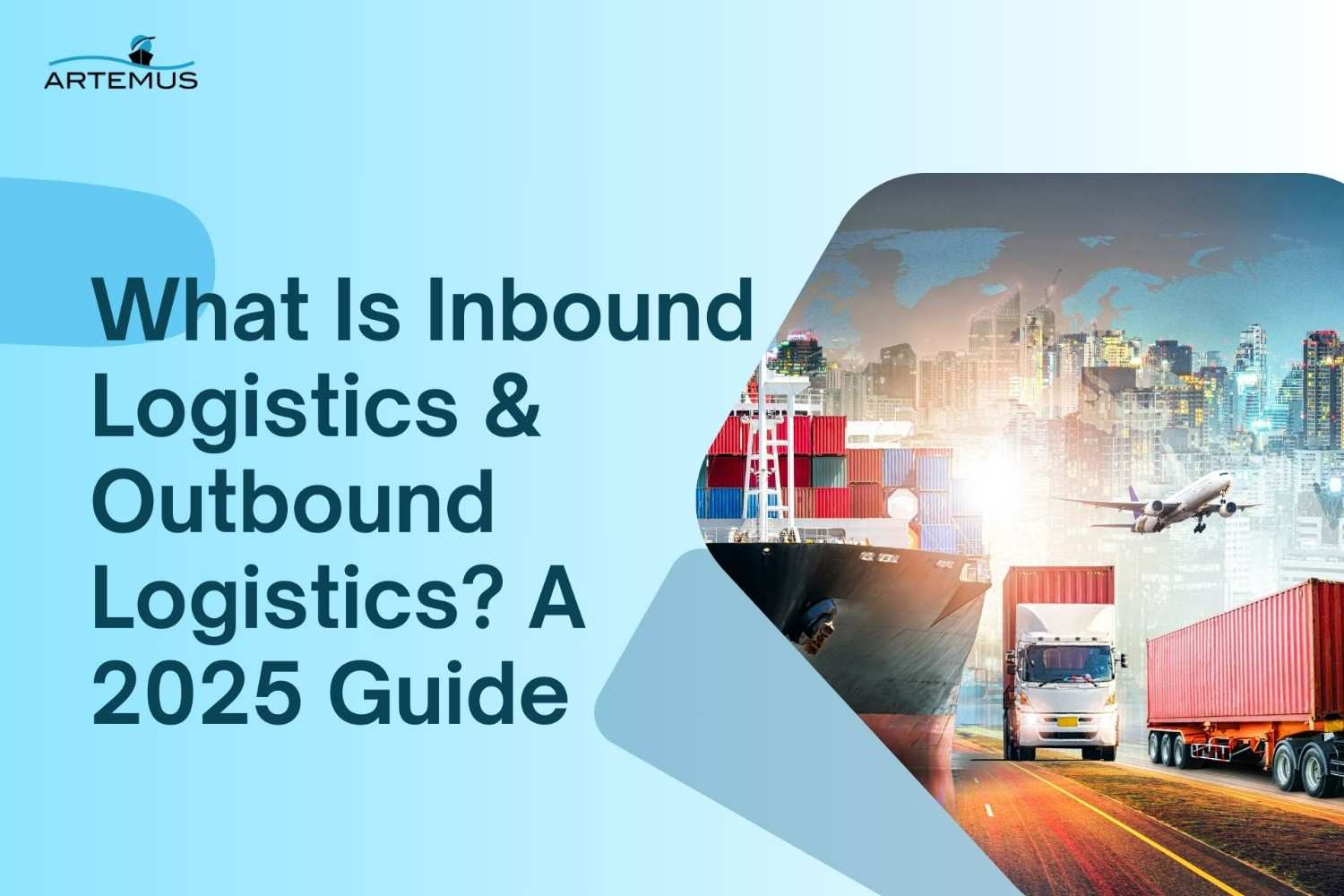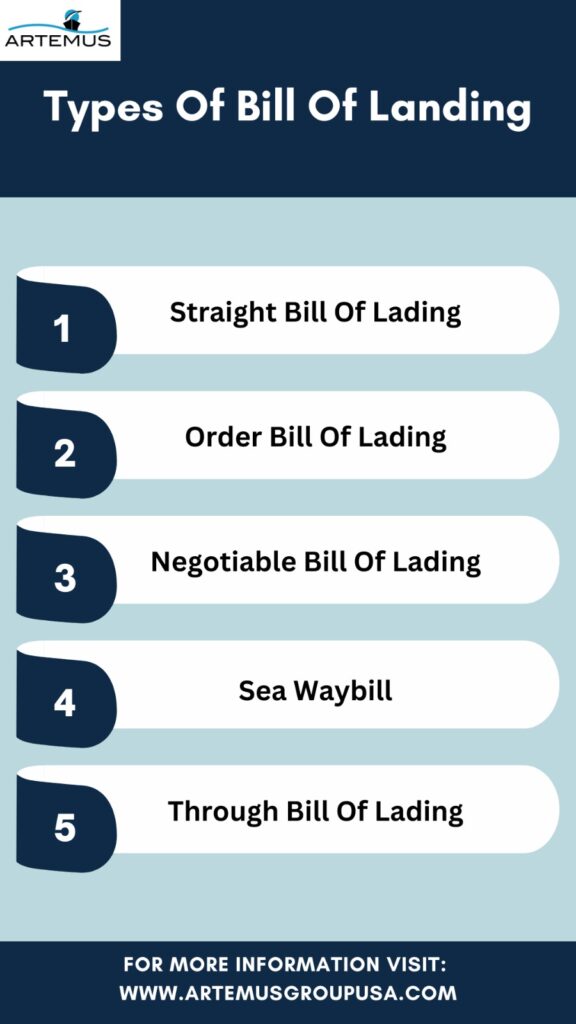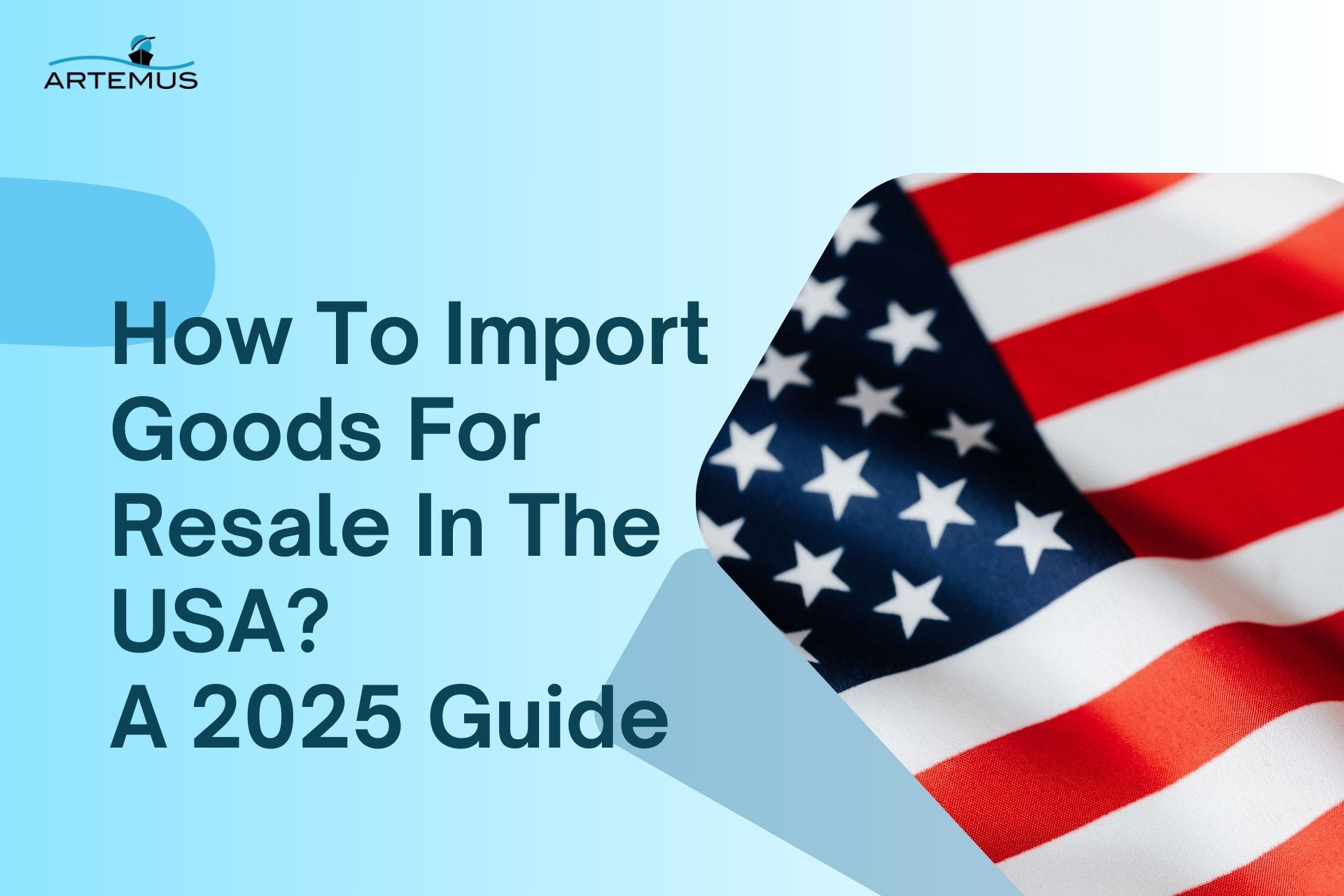
What Is Inbound Logistics & Outbound Logistics? A 2025 Guide
In the dynamic world of supply chain management, understanding the nuances of inbound and outbound logistics is crucial for operational

In the dynamic world of international trade and shipping logistics, few documents hold as much significance as the Bill of Lading (BOL). Acting as a crucial cornerstone in the supply chain process, the BOL serves as both a receipt and a contract, documenting the journey of goods from the point of origin to the final destination.
But navigating the complexities of BOL compliance can often be daunting for businesses, which is where Artemus steps in. Artemus Transportation Solutions offers cutting-edge software solutions tailored for Importer Security Filing (ISF) and Automated Manifest System (AMS) requirements, ensuring seamless and successful compliance with regulatory mandates.
Table Of Contents
A Bill of Lading (BOL) is a crucial document in the realm of international trade and shipping, serving as a detailed receipt of goods being transported from one location to another. Essentially, it functions as a contract between the shipper (the party sending the goods), the carrier (the entity responsible for transporting the goods), and the recipient (the party receiving the goods).
This document outlines key information such as the type, quantity, and condition of the goods being shipped, as well as the terms and conditions of the transportation agreement. Moreover, the Bill of Lading serves multiple purposes beyond merely acknowledging receipt of goods. It acts as evidence of the contract of carriage, indicating the carrier’s obligation to deliver the goods to the specified destination in exchange for payment.
Additionally, it serves as a title document, enabling the transfer of ownership of the goods from the shipper to the recipient upon endorsement, particularly in the case of negotiable Bills of Lading. Furthermore, the Bill of Lading plays a crucial role in facilitating smooth logistics operations, providing documentation for customs clearance, and insurance claims, and resolving disputes that may arise during transit.
In essence, the Bill of Lading is a fundamental instrument in global trade, ensuring transparency, accountability, and legal protection for all parties involved in the shipping process.
Related: How To Start A Freight Forwarding Business? 10 Easy Steps
In understanding the intricacies of a Bill of Lading (BOL), it’s essential to delve into its key components, which serve as the backbone of this crucial shipping document. Here are the fundamental elements that comprise a comprehensive BOL:
The BOL typically begins with detailed information about the shipper, including their name, address, and contact details. This section ensures clarity regarding the party responsible for initiating the shipment.
Following the shipper’s information, the BOL includes details of the consignee, the party to whom the goods are being shipped. This section outlines the recipient’s name, address, and other pertinent contact information.
The BOL also identifies the carrier responsible for transporting the goods. It includes the carrier’s name, address, and relevant contact details, providing clarity on the entity facilitating the shipment’s movement.
Central to the BOL is a comprehensive description of the goods being transported. This section outlines the type, quantity, weight, dimensions, and any other pertinent details regarding the cargo, ensuring accurate identification and handling throughout the shipping process.
The BOL specifies the origin and destination of the shipment, delineating where the goods are being shipped from and their ultimate delivery point. This information is crucial for planning and executing the logistics of the transportation journey.
A critical aspect of the BOL is the inclusion of shipping terms and conditions, which outline the rights, responsibilities, and liabilities of the parties involved in the transportation process. This section often references industry-standard terms such as Incoterms®, clarifying the obligations of the shipper, carrier, and consignee.
Finally, the BOL requires signatures from authorized representatives of the shipper, carrier, and consignee, acknowledging their agreement to the terms outlined in the document. Additionally, it includes the date of issuance, providing a timeline reference for the commencement of the shipping journey.
Related: ISF Form (Import Security Filling): Elements & Top Practices
In global trade, the Bill of Lading (BOL) is typically issued by the carrier or shipping line handling the goods. This entity oversees the physical transportation, issuing the BOL upon receipt of the cargo. It serves as a formal acknowledgment of receipt and outlines the terms of transportation. Occasionally, freight forwarders or intermediaries may also issue the BOL. Regardless of the issuer, the BOL remains integral to international trade, facilitating the smooth movement of goods across borders.
Related: What Is Ocean Freight Forwarding & Its Process?

The Bill of Lading (BOL) comes in various types, each designed to meet specific needs and requirements in the realm of international trade and shipping. Here are some common types of Bills of Lading:
1. Straight Bill of Lading: Also known as a non-negotiable or consigned Bill of Lading, this type is issued to a specific consignee and is not negotiable. It means that the goods are to be delivered only to the named consignee and cannot be transferred to another party without the shipper’s consent.
Straight Bills of Lading are typically used in transactions where payment has been made in advance or where there is no need for the goods to be transferred to another party.
2. Order Bill of Lading: Unlike a straight Bill of Lading, an Order Bill of Lading is negotiable, meaning that it can be transferred to another party through endorsement. The consignee named on the Bill of Lading can transfer the title of the goods to another party by endorsing the document.
This type of BOL provides greater flexibility and convenience, allowing for easier transfer of ownership during transit. It’s commonly used in transactions involving letters of credit or where goods are sold on credit terms.
3. Negotiable Bill of Lading: This type of BOL is similar to an Order Bill of Lading in that it is negotiable and can be transferred to another party. However, unlike an Order Bill of Lading, a Negotiable Bill of Lading does not require endorsement for transfer of title.
Instead, the document itself serves as the title to the goods, and possession of the Bill of Lading is sufficient to claim ownership. Negotiable Bills of Lading are often used in transactions where the goods are intended to be sold or traded multiple times during transit.
4. Sea Waybill: Unlike traditional Bills of Lading, a Sea Waybill is not a negotiable document and does not confer title to the goods. It simply serves as a receipt of goods and evidence of the contract of carriage between the shipper and the carrier.
Sea Waybills are typically used for shipments where there is a high degree of trust between the parties involved, such as repeat customers or established business relationships.
5. Through Bill of Lading: This type of BOL is used for shipments involving multiple modes of transportation, such as sea, rail, and trucking. It covers the entire journey from the point of origin to the final destination and consolidates all transportation contracts into a single document.
Through Bills of Lading simplify the shipping process for shippers and recipients by providing a single point of contact and accountability for the entire shipment.
Related: How To Choose A Freight Forwarder? 10 Critical Aspects
The Bill of Lading (BOL) serves several critical functions in the realm of international trade and shipping, each contributing to the smooth and efficient movement of goods across borders. Here are five key functions of the Bill of Lading:
Related: How To Become A Freight Forwarder: A Stepwise Guide
Navigating the complexities of international trade and shipping requires a thorough understanding of the rules and regulations governing the Bill of Lading (BOL), a critical document in the logistics chain. Here, we delve into the key rules and regulations surrounding the BOL:
The carrier is responsible for ensuring that the BOL accurately reflects the conditions of the cargo upon receipt and delivery. They must adhere to regulations that govern the proper handling, storage, and transportation of goods to minimize the risk of damage or loss during transit.
Regulations dictate the proper issuance of the BOL, including the inclusion of essential details such as the shipper’s and consignee’s information, description of the goods, shipping terms, and conditions. Compliance with these requirements is crucial to ensure the validity and enforceability of the BOL.
The BOL serves as a document of title for the goods being transported, and regulations govern the transfer of ownership from the shipper to the consignee or other designated parties. Proper endorsement and transfer procedures must be followed to facilitate smooth transactions and prevent disputes over ownership.
In the context of international trade, regulations such as the International Maritime Dangerous Goods (IMDG) Code and the International Convention for the Safety of Life at Sea (SOLAS) impose specific requirements for the transportation of hazardous materials and ensure compliance with safety standards and protocols.
Various national and international laws, including the Hague Rules, Hague-Visby Rules, and Hamburg Rules, provide the legal framework for BOL regulations and govern issues such as carrier liability, cargo claims, and dispute resolution. Compliance with these legal provisions is essential to protect the interests of all parties involved in the shipping process.
Related: OTI License Requirements, Costs, Renewal, & Regulations
In today’s digital era, the Electronic Bill of Lading (e-Bill of Lading) revolutionizes international trade by digitizing essential shipping documentation. Serving as a digital version of the traditional paper-based Bill of Lading (BOL), an e-bill of Lading facilitates the swift exchange of crucial information electronically.
It records goods’ receipts, outlines carriage terms, and acts as a contract between shipper and carrier. Utilizing digital platforms or specialized software, e-Bills of Lading offer benefits like faster processing, reduced paperwork, enhanced security, and improved accessibility.
They seamlessly integrate with other electronic systems, streamlining global trade. However, their adoption requires addressing legal and regulatory considerations to ensure validity and enforceability in transactions.
Related: What Is Global Trade Compliance & Its Key Components
Artemus Transportation Solutions specializes in providing cutting-edge ISF (Importer Security Filing) and AMS (Automated Manifest System) software solutions tailored to ensure successful compliance for businesses engaged in international trade.
The ISF software solution simplifies the filing process for Importer Security Filings, helping businesses comply with U.S. Customs and Border Protection (CBP) regulations. By automating data entry, providing real-time updates, and facilitating communication with customs authorities, Artemus enables importers to meet ISF requirements seamlessly and avoid costly delays or penalties.
Additionally, Artemus offers AMS software solutions designed to streamline the submission of advance cargo information required by CBP through the Automated Manifest System. By integrating with existing transportation management systems, their AMS software ensures accurate and timely transmission of manifest data, facilitating smoother cargo clearance and reducing the risk of regulatory violations.
Related: 10 International Shipping Documents To Must Have In 2024
The Bill of Lading (BOL) is a document that serves as both a receipt and a contract for the shipment of goods, documenting their journey from the point of origin to the final destination.
The bill of lading is typically paid by the party responsible for arranging the shipment, which is often the shipper or exporter.
The four functions of the bill of lading are receipt, contract, title, and document of transfer.

The Bill of Lading (BOL) is a vital document in international trade, serving as a receipt, contract, and title for shipped goods. It ensures transparency and legal protection throughout the shipping process, highlighting its essential role in facilitating smooth commerce across borders. Whether in paper or digital form, the BOL remains indispensable, reflecting its enduring significance in the dynamic realm of global trade.

In the dynamic world of supply chain management, understanding the nuances of inbound and outbound logistics is crucial for operational

In today’s interconnected world, businesses rely heavily on global trade to expand their markets, access new resources, and drive growth.

Importing goods for resale in the USA presents a lucrative business opportunity, but navigating the complexities of U.S. customs regulations,
Get In Touch
Artemus’ Software Solutions for ISF, AMS, Japan AFR, eManifest Canada, & Panama B2B filings.